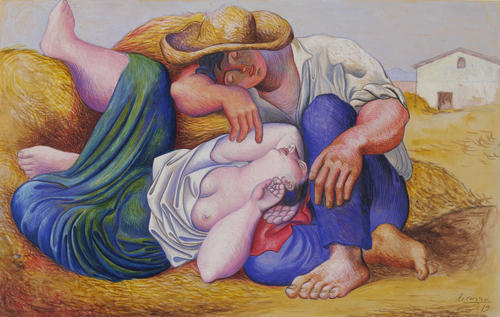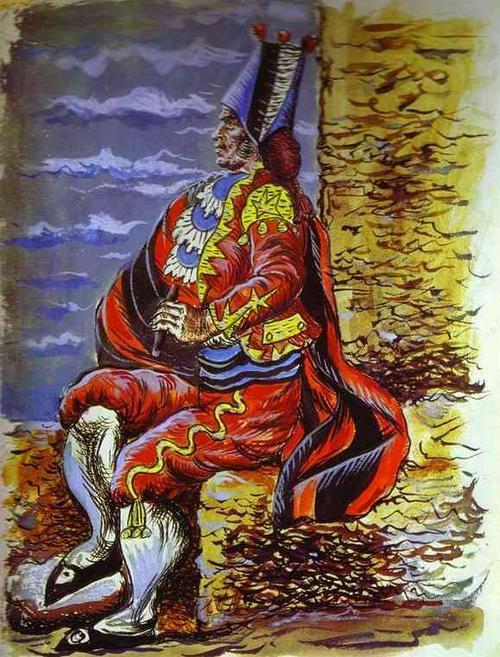What is Guache?
Guache (or gouache) is a paint medium akin to watercolour but radically different in composition and usage. The term guache is derived from the Italian 'aguazzo' meaning 'mud'. That should give you an idea of its consistency, opaque and wet. Art historians call it "body colour"; it is also known as "opaque watercolour".
The ancient Egyptians have been known to use guache. It became popular with 18th century Rococo painters like Francois Boucher. The prodigiously gifted German artist and printmaker Albrecht Dürer (1471-1528) combined guache with watercolour in some of his works. Pablo Picasso used guache in his inimitable style to create several masterpieces. Henri Matisse's Nu Bleu II (The Blue Nude), painted in 1952, is among the world's most recognisable guache paintings. Today, guache is extensively used by commercial artists. |  |
 | Guache consists of pigments mixed with gum Arabic. The addition of a white pigment like chalk gives it an opaque quality that when dry, renders as flat and brilliant colour. To thin out guache, water is all that's needed, just like watercolour and acrylic paint. Guache dries extremely fast. An interesting property of guache is that when paints dry, light colours appear lighter and dark colours, darker. This poses quite a challenge when an artist needs to match a particular colour over several painting sessions.
How does guache differ from watercolour? In many ways:
Since guache is thick and opaque, it can be applied on to coloured backgrounds unlike watercolour, whose transparency can emerge only on white paper. Like oil paints, white pigment must be added to guache to lighten dark shades; watercolour has only to be applied thinly. The opaque quality of guache makes it easy to cover lower layers of paint; watercolours, since they are transparent, never fully conceal underlying paint layers. To get started with guache painting, you need paints, brushes, watercolour paper, water and a palette. A few tips:
Buy good quality paints like Winsor & Newton or Da Vinci, low quality brands will not give you the rich, opaque effect desired. Try different sizes and types of brushes for varied effects; cheap, synthetic sable brushes are good for starters.
To obtain a pale shade, add dark pigment to white. This helps retain opacity while you achieve a lighter colour. Use just enough water to thin out guache. Ideally, it should have a flowing, salad-dressing consistency. Too much water and it will resemble watercolour; too little and the thick paint will crack. Painting with guache can be tricky for beginners, but so satisfying is the final effect it achieves that you could find yourself getting positively hooked to this medium, so go ahead, have fun with guache! |

